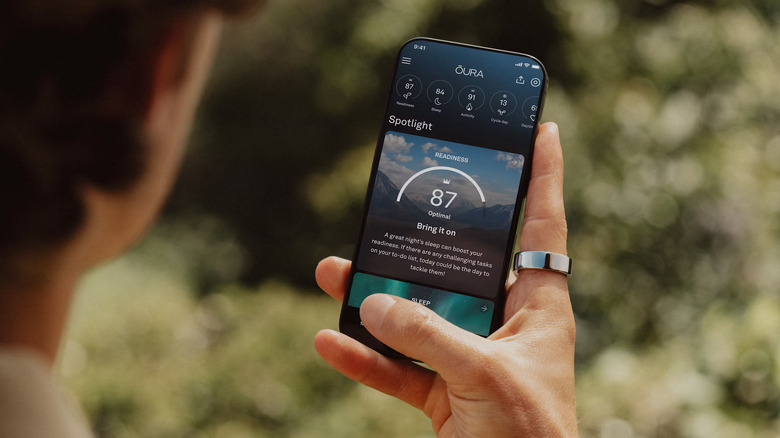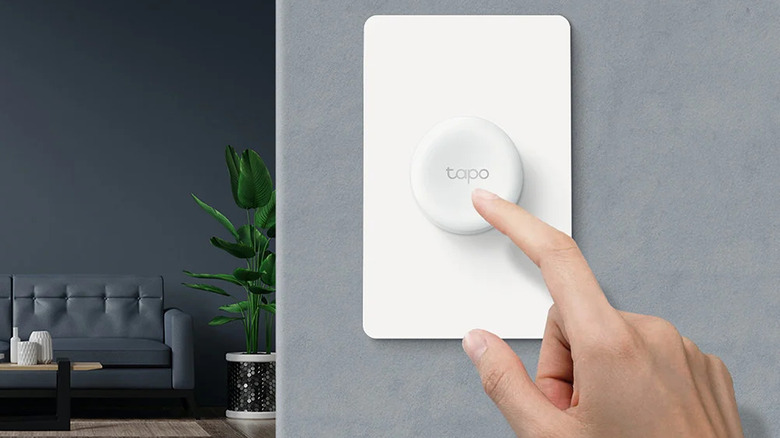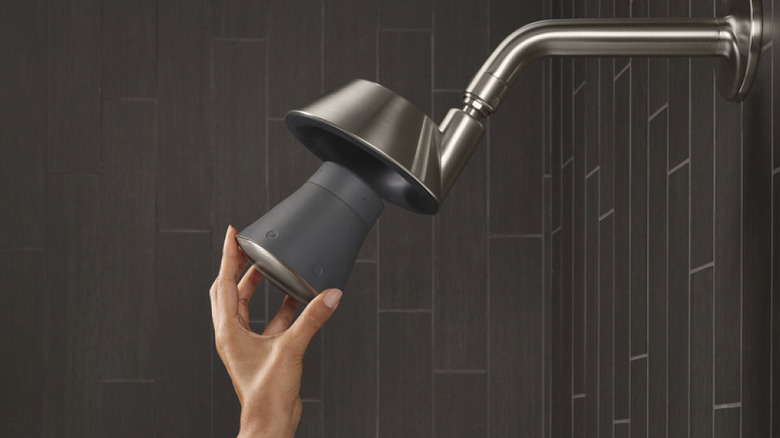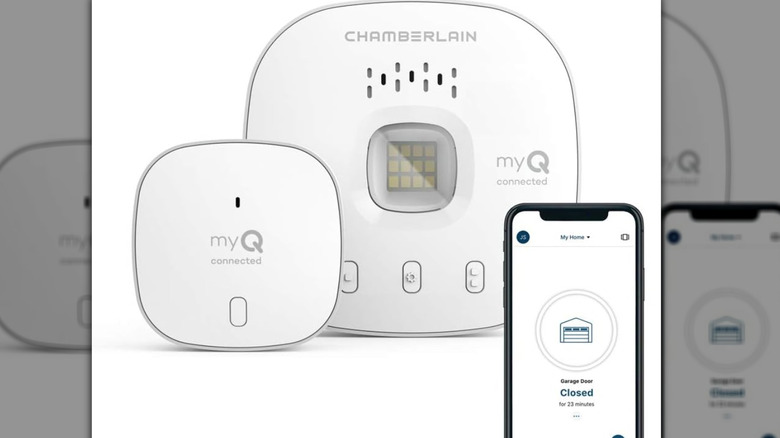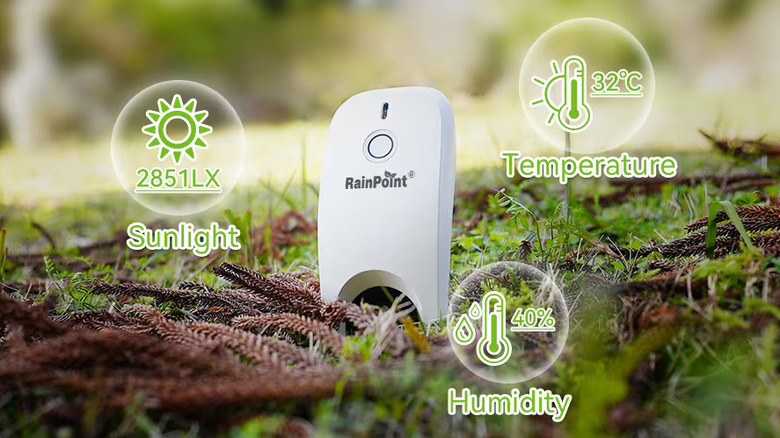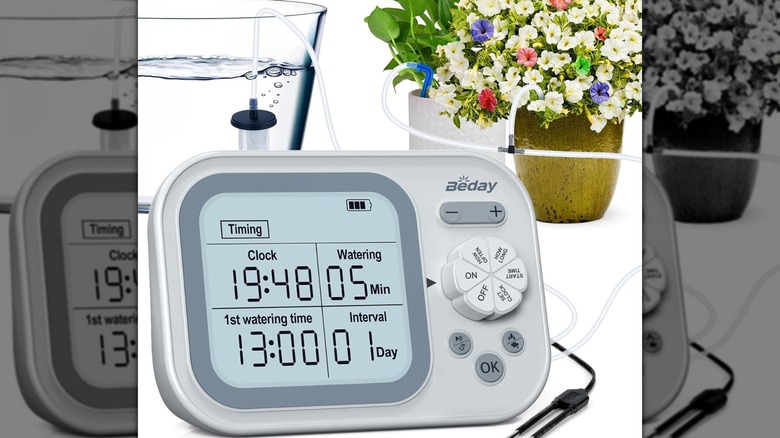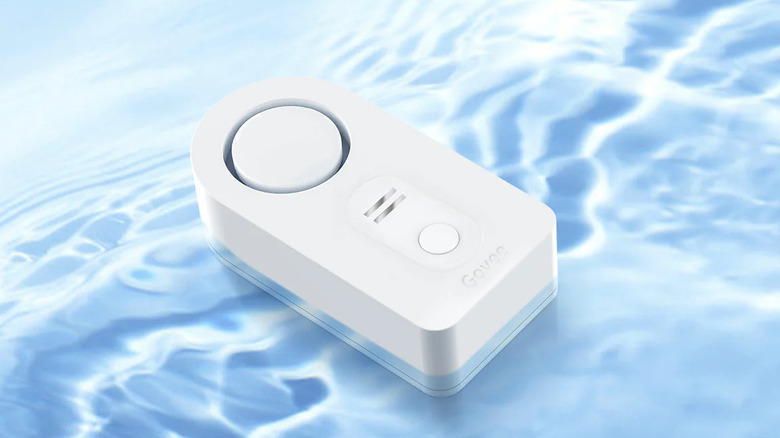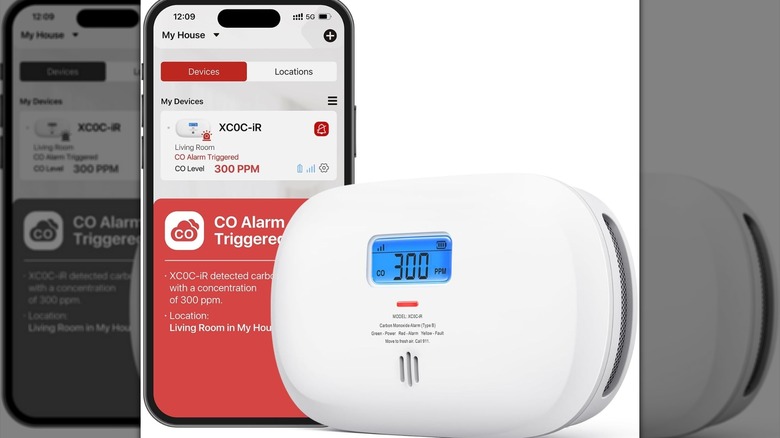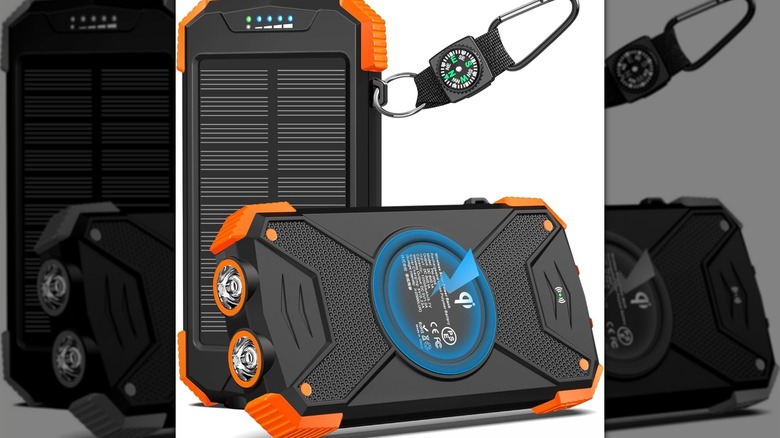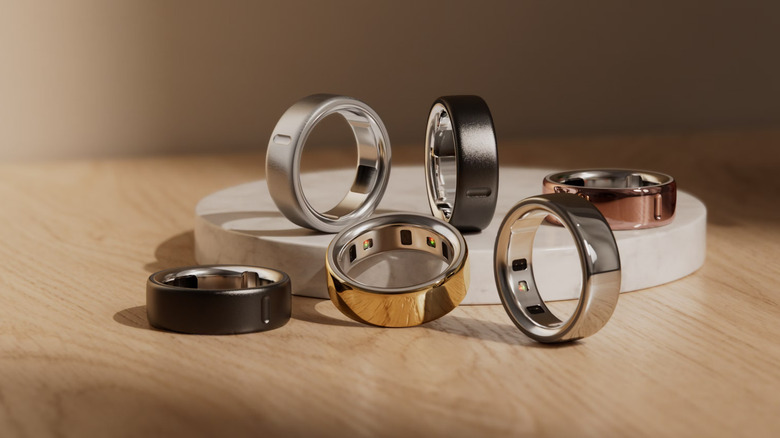12 Little-Known Smart Gadgets Worth Trying For Yourself
We may receive a commission on purchases made from links.
You can never have too many smart gadgets. At least, isn't that the motto you would expect from SlashGear? For every need you have, whether in your home, car, or on your person, there's no doubt a device to fit the bill. Technology is improving all the time, which makes it all the more enticing to try new things as soon as they roll out.
With so much technology on the market, it's always surprising when a company manages to try something new and blow our minds in the process. Sure, we appreciate the small tweaks that companies make to improve their tech lineup, but every once in a while, you come across something completely new.
There are plenty of lesser-known smart gadgets that are worth trying, whether because they can make life easier or just because they're really cool. Here are a few of the most interesting and potentially helpful, yet little-known, pieces of technology worth exploring.
Pet tracker
Every responsible pet owner makes sure their furry friend has a collar with a tag on it. You might have your address, phone number, and even a QR code on your pet's tag, just to make sure that if they get lost, a helpful human can return them home. But what if you didn't need another person to ensure your pet makes it home safely?
New technology uses GPS to track your pet, whether they manage to break out of the fence or slip away while on a walk. With GPS tracking, you can find your pet using your smartphone, pinpointing their location on the map.
The key is finding the right tracker for your pet. A designated GPS tracker for dogs, like Tractive, might be the best solution for a dog that spends a lot of time outside. However, if you have a lazier pooch — or a cat, or some other critter that maybe isn't meant to go outdoors — you might be able to use an AirTag (or a Samsung Galaxy SmartTag2 for Android users) to ensure your pet is where they should be.
Apple AirTags use Precision Finding to keep track of things, which is handy because it can tell you where your pet is, whether they're in the house or have managed to slip out.
Smart home buttons
If you remember Amazon's buy buttons, this next little-known smart gadget might be right up your alley. Smart home buttons are an underrated accessory worth trying because you can program just about anything on a smart button to make your life easier. These buttons do require a smart home setup with Bluetooth or WiFi-enabled devices, but from there, the options are limitless.
For example, the TP-Link Tapo Smart Button works with various Tapo devices, including lights, fans, and doorbells. These buttons support different controls, such as a single tap, double tap, or rotation for various settings. GoveeLife also offers a mini-remote with multiple buttons you can sync to devices like lights, garage door openers, heaters, and more.
Even if your home's devices aren't smart, a system of smart outlets can connect with smart home buttons. Then, you can control a long list of devices from a simple remote rather than a smartphone app (or multiple apps). Some smart buttons also offer geofencing functions, so you can have a device in your pocket that, when you walk through the front door, immediately turns the TV on, for example.
The possibilities are nearly endless, but keep in mind that compatibility between your smart button, smart devices, and internet connection is important. Fortunately, multiple brands make smart buttons, so there's something for everyone no matter what smart home system (or smartphone) you use.
Bluetooth shower speaker
If you like to listen to music in the shower, it's easier than ever these days. From waterproof Bluetooth speakers to pockets designed to protect your phone in the shower, there are various options. One innovative solution worth trying, though, is a showerhead that combines its water-spraying function with a built-in speaker.
Water-resistant outdoor speakers are one thing, but a Bluetooth-enabled speaker that literally comes out of your showerhead was a surprising find. For now, this waterproof and water-projecting product seems to be available exclusively from Moxie, but it's a quirky concept that could easily catch on.
The Moxie showerhead with Bluetooth from Kohler replaces your entire showerhead, so installation may take some effort. Once it's set up, you can jam out while you shower — for as many as nine hours of play time. Not only does the showerhead look pretty fancy — almost like a lamp — but it also features high-end speakers from Harman Kardon, according to Kohler.
To control the sound, you can use the buttons on the side of the speaker, although that's right where the water sprays from. The speaker's face appears to stay mostly dry, and the entire head is made of silicon — likely for added durability. When it's time to charge the speaker, pop it out (the fitting is magnetic), charge, and pop it back in before your next shower.
Smart refrigerator sensor
If you're still holding out with an old-fashioned fridge, no worries — you can still enjoy some impressive tech upgrades. While many modern refrigerators have features like windows to peek through to see what to add to the shopping list, or a shopping list-building function itself, older fridges are pretty bare-bones.
True, many modern appliances come with useless tech, but they often lack the features people would actually pay for, like remote refrigerator monitoring. If you've ever accidentally left the refrigerator door open or had the power go out while you were away, you'll understand the desire for a smart refrigerator sensor.
A standard thermometer is helpful, but it requires you to be home to check the temperature, and it won't alert you in time to prevent food from spoiling. A smart refrigerator sensor, on the other hand, lets you know if the door is left open or if the temperature drops below a safe level during a power outage or equipment failure.
With a smart gadget like the YoLink Smart Wireless Temperature/Humidity Sensor, you can set alerts for your fridge or freezer (or anywhere else, really) to notify you about high or low temperature and humidity changes. There are also multiple alert options, including push notifications, email, SMS, and even phone calls (with TTS). Other add-ons, like power failure alarms and leak sensors, ensure your fridge stays functional, even if it isn't technically "smart."
Smart garage door opener
Garage door openers are handy, and it's great to have a remote in your car that allows you to open and close the door right as you roll into (or out of) the driveway. But what happens when you can't remember if you closed the garage door? With a smart garage door opener, you won't have to worry about that.
A smart garage door opener offers several different functions, the most useful being the ability to remotely open and close the door. This feature is handy for accepting deliveries, letting people in (like a pet sitter or visitor) on short notice, and, of course, making sure your home is secure while you're away.
There are other perks, too. For example, the Chamberlain Smart Garage Control even schedules close times for your garage, so you can make sure the door locks at bedtime. It also sends alerts if the door is left open when you leave the house. Some systems, like Chamberlain's, even support two garage doors on the same account, making it even easier to upgrade a non-smart garage.
Don't have a garage door opener yet? If you're tech-savvy, you can program a Raspberry Pi to function as a remote garage door opener. With the store-bought version, make sure to check compatibility before ordering a smart opener, because not all garage doors are compatible.
Moisture sensor for plants
Moisture sensors have been around for a while, but most manual versions are sticks you have to check daily. There's nothing wrong with a set of semi-smart soil testing sticks that have a test window to show you how warm or dry your soil is. The only problem is you have to physically go to each plant and check the readings. In contrast, a smart moisture meter sends you alerts when your plants get dry, which is a lifesaver for people who lack a green thumb, not to mention their plants.
If you've ever wished your plants could tell you when they're thirsty, a device like the Rainpoint Wi-Fi Soil Moisture Meter is probably just what you never knew you needed. The sensor tracks moisture and temperature, alerting you when the parameters are out of spec. If that's not convenient enough, the Rainpoint system (and probably others, too) can be integrated into a smart watering system.
Rainpoint's app tracks your data so you can look at trends and avoid overwatering. Granted, the system will quickly get expensive if you have multiple potted plants or garden beds you want to monitor, because each plant requires a separate device. Each moisture meter also needs its own water timer.
Rainpoint is a well-known option among smart moisture sensors, but there are other choices worth considering. While the concept is still catching on, the range of available options remains somewhat limited for now.
Automatic plant watering system
Building on the genius concept of plant moisture monitoring, an automatic plant watering system takes plant care to the next level. Sure, there are already timed sprinkler systems, and those are great for lawns or outdoor plants that need consistent watering. However, what if you could tailor your watering schedule for your indoor plants so nothing is ever over- or under-watered?
For anyone who loves their potted plants, an automatic plant waterer could be the perfect indoor solution. Whether you tend to forget to water your plants or need a reliable system while you're out of town, a mini watering system provides convenience and peace of mind.
Smart plant watering systems deliver water on a regular schedule, and many also offer humidity-based watering. Unlike traditional sprinkler systems, which could turn your lawn into a muddy puddle, these smarter systems adjust to the specific needs of potted plants, providing just the right amount of water.
There's also not much of a learning curve with a smart system since it uses the same drip system and tubing that non-smart systems do. The difference is in the programming ability and humidity monitoring — no more sticking your fingers in the soil to check if a plant needs water. The one issue we found with automatic plant waterers is that the technology doesn't seem to be "there" yet with regard to Bluetooth or WiFi connectivity, but that may come soon.
Water leak sensor
With all this talk of water, it's worth pointing out that it's just as bad to have water where you don't want it as it is to not have it where you do want it. If you ever worry about leaks around the house, a smart water leak sensor offers peace of mind. It could also save you a ton of money by alerting you to leaks before they cause damage.
Many brands offer water leak sensors, and the most practical application of them seems to be in areas where you expect water to leak, such as under sinks, near bathtubs, and behind toilets. You could also use water sensors underneath your home to ensure crawl spaces stay dry, or in attic spaces if you suspect roof leaks. In some areas of the United States, you might want multiple sensors for your basement so you can act quickly in the event of a leak or flood.
Devices like the Govee WiFi Water Sensor, one of the highest-rated leak sensor kits we could find, offer peace of mind and immediate alerts when anything goes awry water-wise. Like other smart devices, the Govee water sensors require a plug-in hub (a WiFi connection gateway), but you can connect up to 10 sensors to it in what Govee calls a "water protection net."
Set up alerts on your phone and custom volume level alerts where you need them — like a 100dB alarm for the basement.
Carbon monoxide sensor
While a carbon monoxide sensor might not sound like the most exciting piece of technology that's a must-try, it's an essential device to have in your home. Each year, over 400 Americans die (and over 100,000 more get sick) due to carbon monoxide poisoning. Carbon monoxide is both odorless and colorless, and many people get sick because they have no idea it's in the air.
A smart carbon monoxide sensor is worth trying for peace of mind. It's not a significant investment in terms of price, but it's a very important investment for your health and safety. Plus, state regulations might require you to have a detector in your home if you have a heating system or appliance that uses fossil fuels.
A device like the X-Sense Smart Carbon Monoxide Detector can attach to the wall or sit on a surface, which makes it portable if you want to bring it on your travels. Either way, the WiFi-enabled system connects with your phone to send alerts if it detects any carbon monoxide. X-Sense's sensor also lasts ten years, making it a good long-term investment. You also won't need a base station for X-Sense's smart carbon monoxide sensor, so it's even easier to take with you.
Solar charger power bank
Solar might not be the best option for everyone, at least when it comes to things like running your entire home or charging your car. Yet a pocket-sized solar charger could be just the smart gadget for many situations, especially if you live in a place that gets a lot of sun year-round.
Solar panel phone chargers might be worth the investment because prices are generally low upfront, and you can reuse your solar panel phone charger many times over its lifespan. A solar charging device like the Blavor Solar Charger Power Bank has plenty of good reviews and isn't too expensive to test out. It's not much to look at and is rather rugged, but wireless charging, fast cable charging, and corded charging when needed are all handy features.
If you do want to use the solar charger as intended, keep in mind that it needs direct sun — and probably a lot of it. Blavor's model, at least — because of its size — has a maximum charging current of 0.23A, with a maximum power of 1.15 watts. Blavor itself declares that solar charging is only a backup method.
Yet, if you're out in the sun a lot or leave it on your dashboard while your car is parked, solar charging might be a good way to generate some extra juice for all your devices. Plus, in emergency situations, you can't beat a solar-charged battery pack.
Smart jewelry
Smart rings might be a piece of technology you didn't even know existed, but now that you know, you might want to try them out. Smart rings offer many of the same features as smartwatches but in a smaller package. You can also find other smart jewelry, though not many are as highly reviewed as rings, at least not to date.
We rounded up the best smart ring brands, with the highest-ranking being the Oura Ring. The Oura Ring Gen3 has some of the best reviews and plenty of color options. Smart rings offer tracking for sleep, exercise, stress, and heart rate, and it's hard to tell it's a smart ring, especially from a distance.
Other smart jewelry options include safety necklaces, which connect to an app. If you're in a dangerous situation, pressing the button on the safety necklace (or keychain) alerts your designated contacts. Smart jewelry like Invisawear's necklace (they also make a keychain) may just be the beginning when it comes to what smart jewelry can do — and how sleek it looks.
For smartwatch wearers, you can also find accessories to convert a smartwatch — such as an Apple Watch — into a pendant. While a silicon case isn't as exciting as metal jewelry, a pendant conversion does make your watch a necklace. Plus, after smartwatches, rings, and necklaces, who knows where jewelry technology will go next?
Bone conduction headphones
Sure, it sounds weird, but bone conduction headphones are one of the coolest new pieces of technology worth trying. Especially if you are hard of hearing, bone conduction headphones might be a perfect solution for you to listen to audio. Bone conduction headphones also don't go into your ear, so they may be more comfortable for people who don't like earbuds but also don't want to wear bulky headphones.
We like the Shokz OpenRun Pro 2's user-friendly controls and sweatproof design, but there are some potential drawbacks, too. We did think the max volume was a bit low on the OpenRun Pro 2s, and the price point isn't ideal for everyone.
Since the technology is not super widespread, it's not entirely surprising that the Shokz OpenRun headphones aren't completely perfect. That said, they're pretty close, with consumers praising the comfort and quality of the headphones, including sound quality.
If you struggle to get comfortable with earbuds but don't want to add bulk, consider trying bone conduction headphones — at least until the next big thing blows them out of the water.
